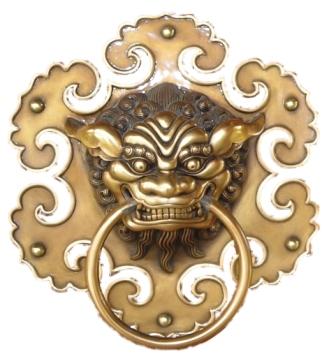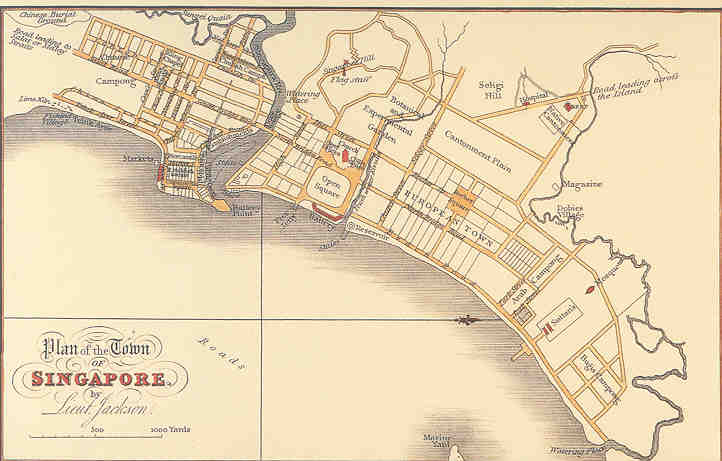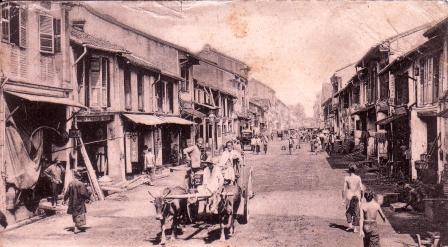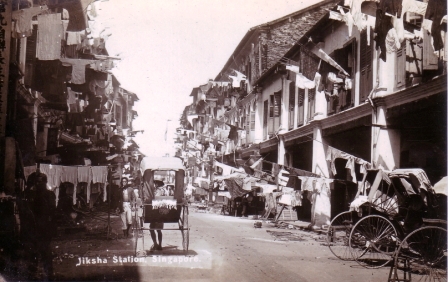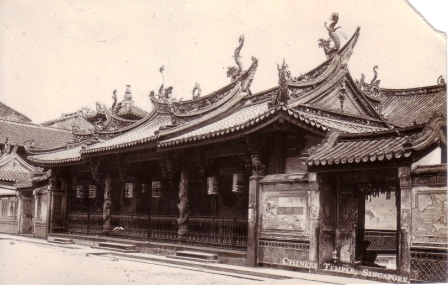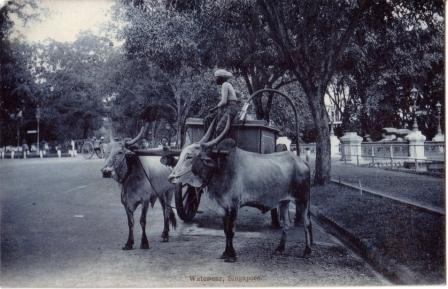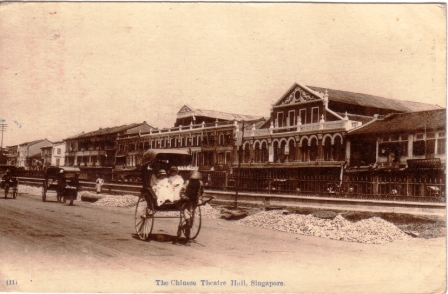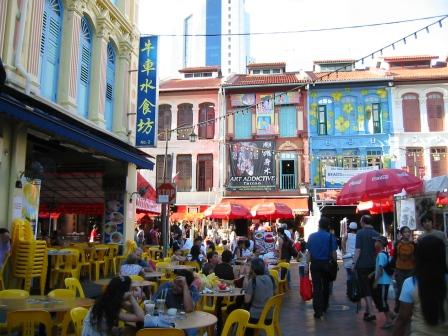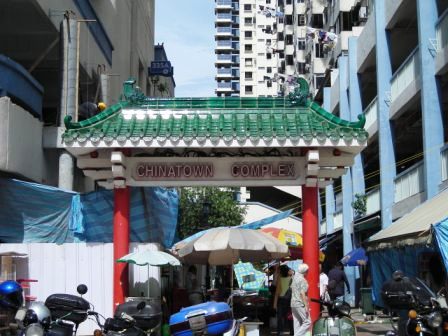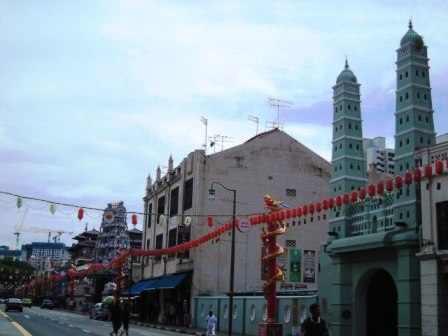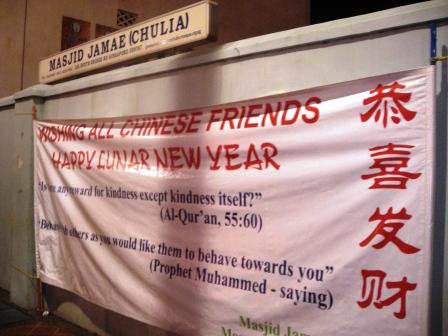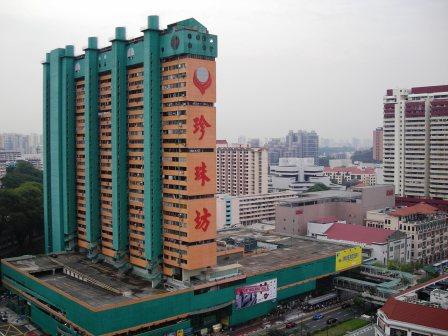 Offical Chinatown: Offical Chinatown:
Singapore Chinatown
新加坡牛车水
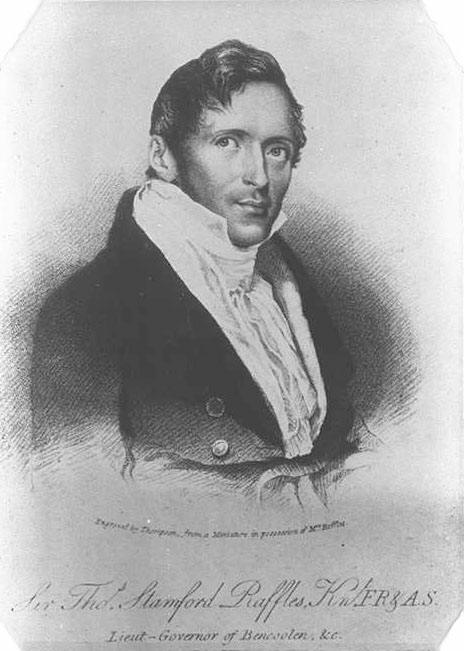 In 1819, Stamford Raffles (later Sir Stamford) of the British East India Company established a trading settlement in Singapore. In 1819, Stamford Raffles (later Sir Stamford) of the British East India Company established a trading settlement in Singapore.
Before leaving for Java, he appointed William Farquhar to be the first British Resident and Commandant of Singapore from 1819 to 1823.
When Raffles returned in 1822, he had plans for an orderly city segregated by ethnicity. This vision unfolded in the Jackson Plan of 1822 where four ethnic areas were designated for the different ethnic groups.
The plan was also shaped along economic lines as wealthy Asians were free to choose their residential areas; within their ethnic area or in the European Town.
Singapore Chinatown
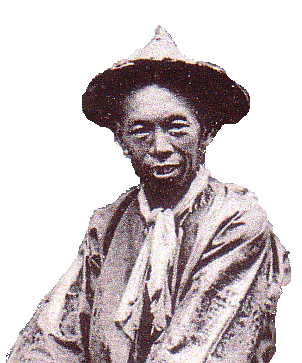 The ethnic Chinese were allocated the area southwest of the Singapore River and Chinatown was born. The ethnic Chinese were allocated the area southwest of the Singapore River and Chinatown was born.
The physical landscape was shaped from 1843 when authorities leased land for development.
A product of this development is the introduction of "five foot ways"; a covered walkway with a depth of five feet to shelter pedestrians from rain or sun.
Within Chinatown, each dialect group occupied distinct areas and built social institutions such as clan associations to serve the collective needs of each dialect group.
Dialect groups in Singapore Chinatown
The very early Chinatown stretched inwards from Telok Ayer Basin. Telok Ayer Street was originally located very close to the sea and the Hokkeins community built the Thian Hock Keng Temple (天福宫) in 1840 for migrants to give thanks to the Sea Goddess, Mazu (妈祖)for a safe journey from China to Singapore.
As the Hokkien population grew and the Hokkien clan association known as the Hokkien Huay Kuan was formed to address the needs of the migrant population.
The Hakkas built their Ying Fo Fui Kun, 应和会馆, Clan Association further down the road while the Teochews built the Wak Hai Cheng Bio at the Philip Street.
The Cantonese congregate around Smith Street, Temple street and Mosque street area. Chinese communities also developed outside of this official Chinatown. For example, Hakkas lived around Bugis area.
Generally speaking, Chinatown covers Kreta Ayer, Telok Ayer, Tanjong Pagar and Bukit Pasoh. Today, most of the original structures had disappeared and high rise buildings were built in their place.
The present Chinatown that is featured in tourist brochures and marketed as Chinatown is in fact the Cantonese section of a larger Singapore Chinatown. It is the Official Chinatown in Singapore.
Official Chinatown of Singapore
This Official Singapore Chinatown is known to the locals as Niu Che Shui (牛车水) literally translated as “Ox-cart water”. Niu Che Shui is pronounced in different ways by each dialect group and so there are many ways of referring to Singapore Chinatown.
This Chinatown continued to develop as Singapore prospered. From as early as the 1950s, people began setting up stalls offering a range of goods and gradually developed into a night market.
This night market with the noise, crowds, range of goods and food stalls began attracting tourists as well and was featured in many postcards in the 1960s to 1980s.
This night market ended on 30 September 1983 when the stalls were relocated into a high rise complex. To many Singaporeans and even tourists, this moved killed the spirit of Chinatown.
Ironically, in 2001, Smith Street was converted into a food street and in 2003 stalls offering souvenirs were reintroduced.
Perhaps, the authorities should have developed the night market by improving its facilities rather than to adopt a “slash and burn” attitude only to have it reintroduced 20 years later.
Although archways are common in other Chinatowns, Singapore Chinatown did not have an archway till one was built by the Singapore Tourism Board possibly to enhance the “Chinatowness” of Singapore Chinatown.
Some tourists felt Singapore Chinatown was too sanitized, too touristy and too kitsch, lacking a sense of “Chinatowness” while locals felt it is catered for tourists and not locals.
Uniquely Singapore
Singapore Chinatown does have its unique features. Being a multi-racial and multi-cultural society since its founding, Singapore Chinatown is not the exclusive sphere of the ethnic Chinese.
From its very early days, Indians and Muslims had lived alongside the Chinese. Indian Temples, Mosques, and churches can be found alongside Chinese Temples and Monasteries.
During major Chinese festivals, the mosque and Indian Temples put out large greeting banners to send their best wishes for the festival.
On the other hand, festivals in mosque and Indian temples are attended by the Chinese. These individual initiatives reflect the spirit of a multi racial and multi cultural society.
In 2009, the local Chinatown association introduced Hungry Ghost Festival tour that was very well received by tourists, locals and expatriates. Hopefully more of such activities will be presented in the future.
Meanwhile, Geylang in Singapore has emerged as a new Chinatown with a totally different character.
Now Singapore has 2 Chinatowns; an “Official Chinatown” and a “People’s Chinatown” in Geylang.
Related articles:
|

 Offical Chinatown:
Offical Chinatown: In 1819, Stamford Raffles (later Sir Stamford) of the British East India Company established a trading settlement in Singapore.
In 1819, Stamford Raffles (later Sir Stamford) of the British East India Company established a trading settlement in Singapore.  The ethnic Chinese were allocated the area southwest of the Singapore River and Chinatown was born.
The ethnic Chinese were allocated the area southwest of the Singapore River and Chinatown was born. 